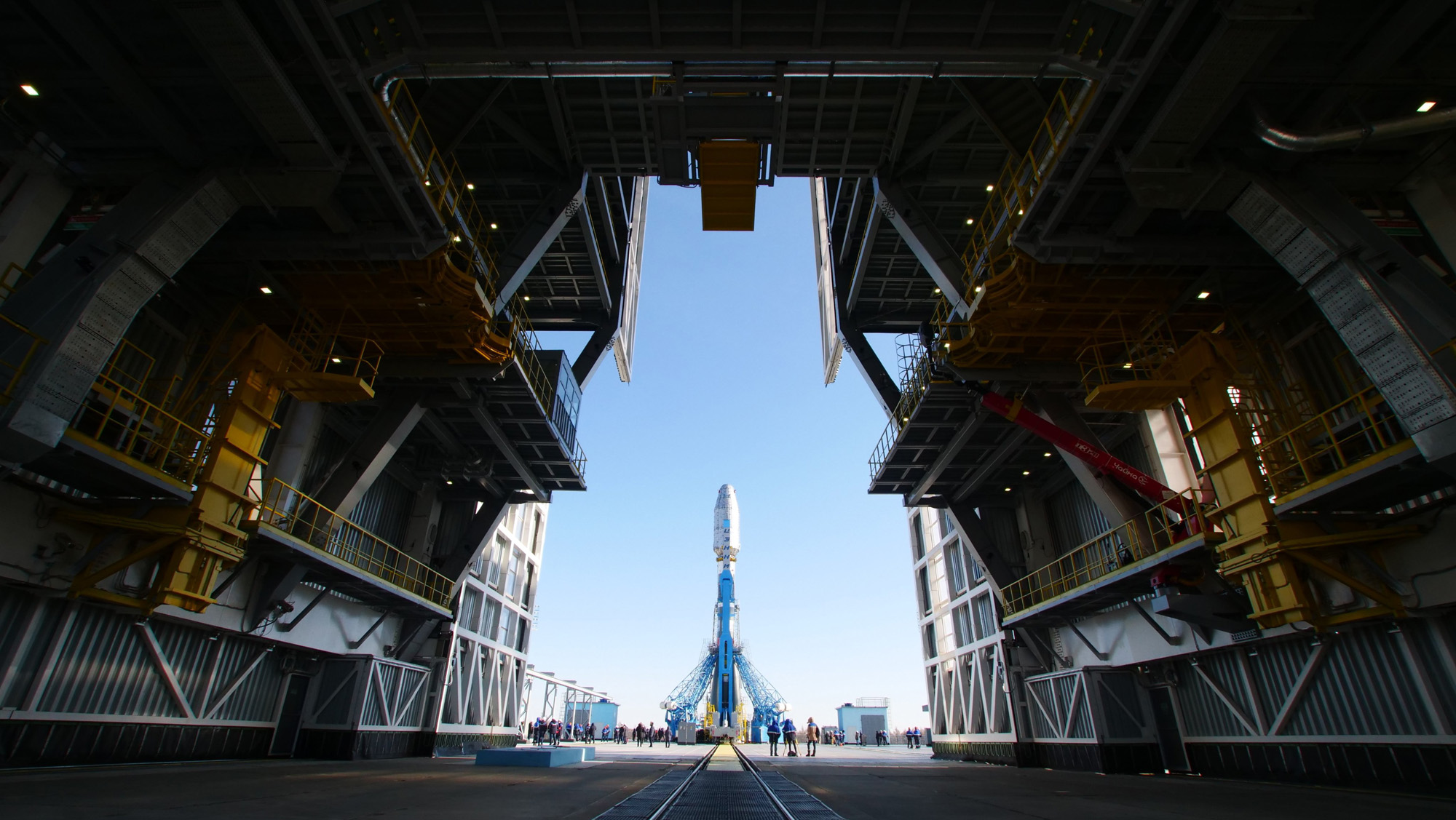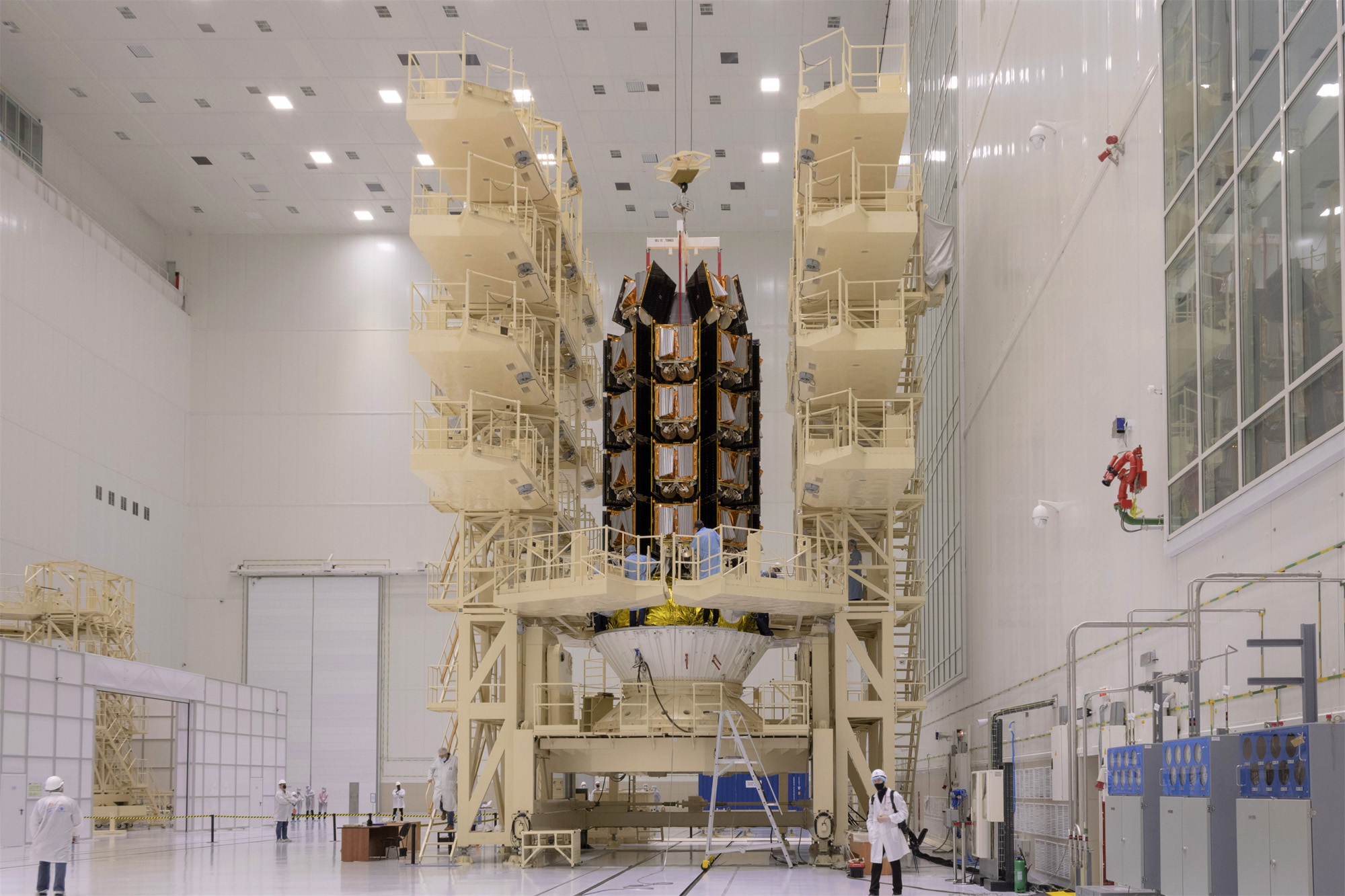Arianespace to launch new fleet of OneWeb internet satellites tonight. Here's how to watch.
Liftoff is at 10:47 p.m. EDT (0247 March 25 GMT).

A Soyuz rocket will launch 36 new satellites into orbit for OneWeb today (March 24), expanding on the company’s growing high-speed internet constellation, and you can watch the action live online.
The Soyuz will lift off from Russia's Vostochny Cosmodrome, located in eastern Siberia near the Chinese border, at 10:47 p.m. EDT (0247 March 25 GMT). The mission is being operated by the France-based commercial launch company Arianespace.
You can watch a livestream of the launch here on Space.com, courtesy of Arianespace, directly via the company's website or on YouTube. The livestream of the launch will begin about 15 minutes before liftoff.
In Photos: OneWeb Launches Global Satellite Internet Constellation
Today's launch — named Flight ST30 — marks the fifth Arianespace flight on behalf of OneWeb, whose mission is to provide internet access for everyone, everywhere, by creating a global connectivity platform through a next-generation satellite constellation. With the launch of 36 new constellation spacecraft, Flight ST30 will bring the OneWeb fleet up to a total of 146 satellites, according to a statement from Arianespace.
The Soyuz rocket will place the satellites into a near-polar orbit, at an altitude of about 280 miles (450 kilometers). The entire mission will last about three hours and 51 minutes, during which the 36 satellites will be deployed by nine separation sequences. The satellites will then raise themselves to their operational orbit, according to the statement.
"How does #Soyuz carry 36 @OneWeb's satellites on a single launch? Using this advanced dispenser system from @RUAGSpace – which will deploy the payloads in nine sequences during a mission lasting nearly 4 hours," Arianespace tweeted.
Breaking space news, the latest updates on rocket launches, skywatching events and more!
Flight ST30 is the second OneWeb launch since the company filed for Chapter 11 bankruptcy in March 2020. OneWeb re-emerged late last year under the ownership of the British government and Indian telecom firm, Bharti Global. Since then, the company has drastically reduced the number of satellites they plan to include in their next-generation constellation.
Initially, OneWeb planned to launch nearly 48,000 satellites for its “Phase Two” constellation. However, the company has since amended its original application with the Federal Communications Commission to include only 6,372 satellites — reducing the size of the constellation by more than 85%, SpaceNews reported.
After re-emerging from bankruptcy in November 2020, OneWeb launched another 36 satellites into orbit on Dec. 18, 2020. Tonight's launch is the second launch since the company gained new ownership and will bring OneWeb up to 146 satellites in orbit, marking a step forward in completing an initial "Phase One" constellation system of 648 satellites, according to a OneWeb statement.
When fully deployed, the OneWeb satellite constellation will enable user terminals that are capable of offering 3G, LTE, 5G and WiFi coverage, providing global access to high-speed internet.
Follow Samantha Mathewson @Sam_Ashley13. Follow us on Twitter @Spacedotcom and on Facebook.

Samantha Mathewson joined Space.com as an intern in the summer of 2016. She received a B.A. in Journalism and Environmental Science at the University of New Haven, in Connecticut. Previously, her work has been published in Nature World News. When not writing or reading about science, Samantha enjoys traveling to new places and taking photos! You can follow her on Twitter @Sam_Ashley13.


